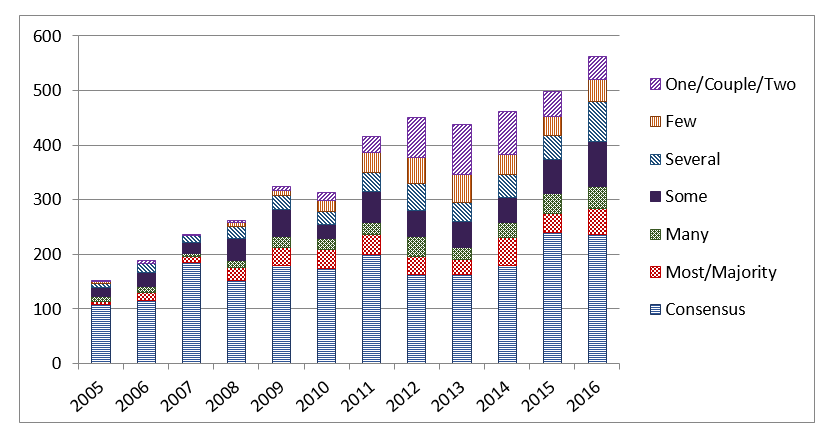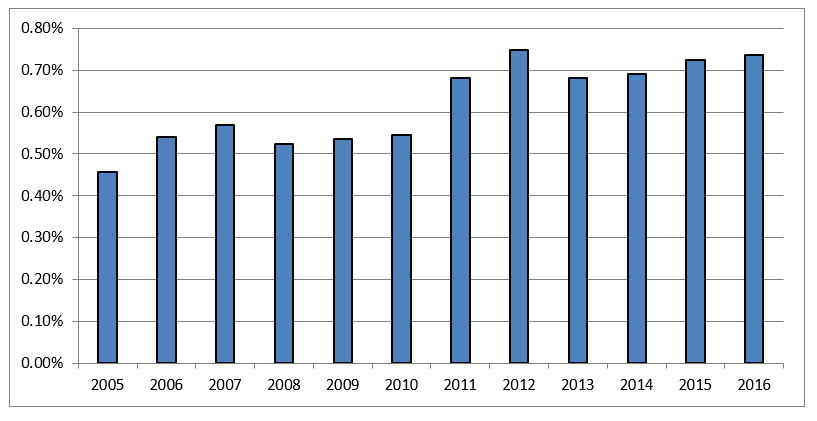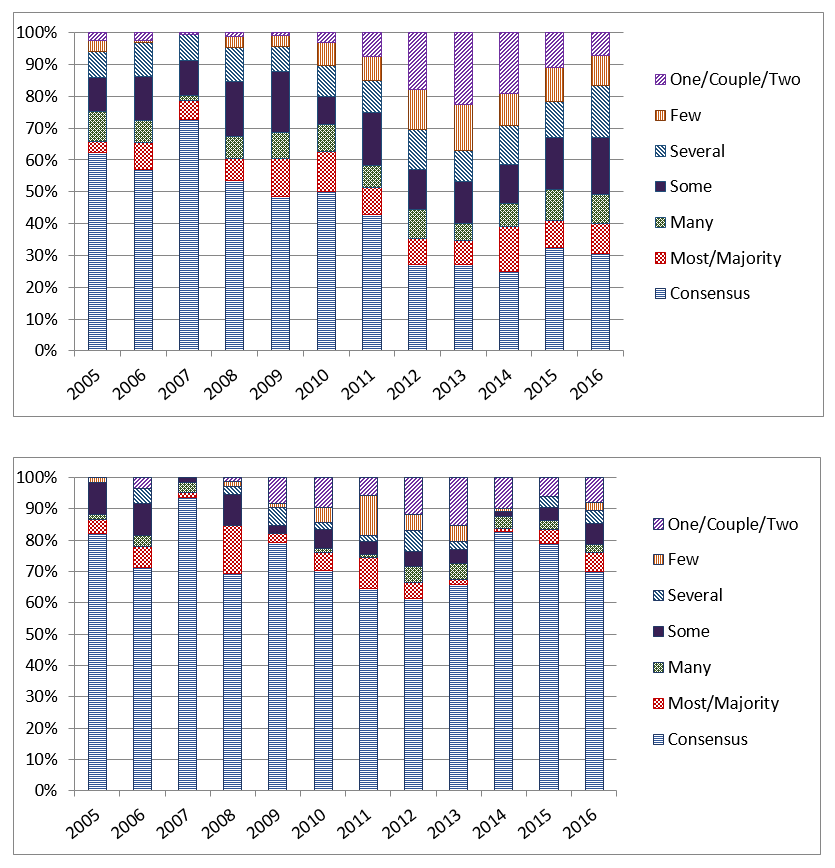FEDS Notes
August 03, 2017
The FOMC meeting minutes: An update of counting words
Melanie Josselyn and Ellen E. Meade
An earlier Feds note provided information about the structure of the FOMC meeting minutes and the use of "quantitative" or "counting" words to characterize the number of policymakers aligned with particular views. This note extends that analysis through 2016.
The minutes have lengthened considerably since 2005, when the FOMC began releasing summaries of its meetings with a lag of three weeks.1 The average length of the minutes has risen from just under 4200 words in 2005 to about 9500 words in 2016, with the bulk of this rise occurring between 2005 and 2009. The total number of quantitative words used in the paragraphs characterizing the views of the Committee members and in the paragraphs articulating the views of all meeting participants (a larger group that includes all Reserve Bank presidents regardless of whether they are voting members during the relevant year) has risen as well, particularly since 2011 (chart 1). In recent years, the quantitative words have constituted about 0.7 percent of the total words in the minutes (chart 2).
Table 1 provides a list of quantitative words used in the minutes, ordered from largest to smallest. In addition to the words listed in the table, the phrase "a number of" is also sometimes used; it indicates that more than one individual expressed a particular view, although the size of the group is otherwise unspecified.
Table 1. Quantitative words used in the FOMC minutes
| "all" |
| "all but one" |
| "almost all" or participants/members "generally" |
| "most" or "majority" |
| "many" |
| "some" |
| "several" |
| "few" |
| "a couple" or "two" |
| "one" … "another" |
In constructing the charts, we grouped counting words that reflect a high degree of consensus into a single "consensus" category that includes "all," "all but one," and "almost all," as well as statements that reflect a high degree of agreement such as "participants generally judged" or "members judged." In addition, we grouped the counting words that cover a very small number of individuals--"one," "two," and "a couple"--into a single category. The word "one" is sometimes used in a "one...another" construction; when that occurred, we counted "one" and "another" as separate views.
Chart 3 provides the share of each counting word in the total for participants (upper panel) and members (lower panel) for each year. Highly consensual statements (shown as "consensus") have constituted about 30 percent of total counting words in participants' paragraphs of the minutes in recent years. Members' paragraphs have a higher proportion of these "consensus" statements--70 percent or more in recent years--which is not surprising in light of the role that the Committee's statement and the discussion of it plays in the members' paragraphs of the minutes.
In conclusion, the FOMC meeting minutes are a key means of informing the Congress and the public about the range of policymaker opinion and debate on monetary policy issues, and thus help ensure that the Federal Reserve is accountable. Analysis of the quantitative words used indicates that the meeting minutes capture a wide diversity of viewpoints expressed by FOMC policymakers.
1. Before 2005, the minutes were released six weeks after an FOMC meeting. Return to text
Josselyn, Melanie, and Ellen E. Meade (2017). "The FOMC meeting minutes: An update of counting words," FEDS Notes. Washington: Board of Governors of the Federal Reserve System, August 3, 2017, https://doi.org/10.17016/2380-7172.2048.
Disclaimer: FEDS Notes are articles in which Board staff offer their own views and present analysis on a range of topics in economics and finance. These articles are shorter and less technically oriented than FEDS Working Papers and IFDP papers.


